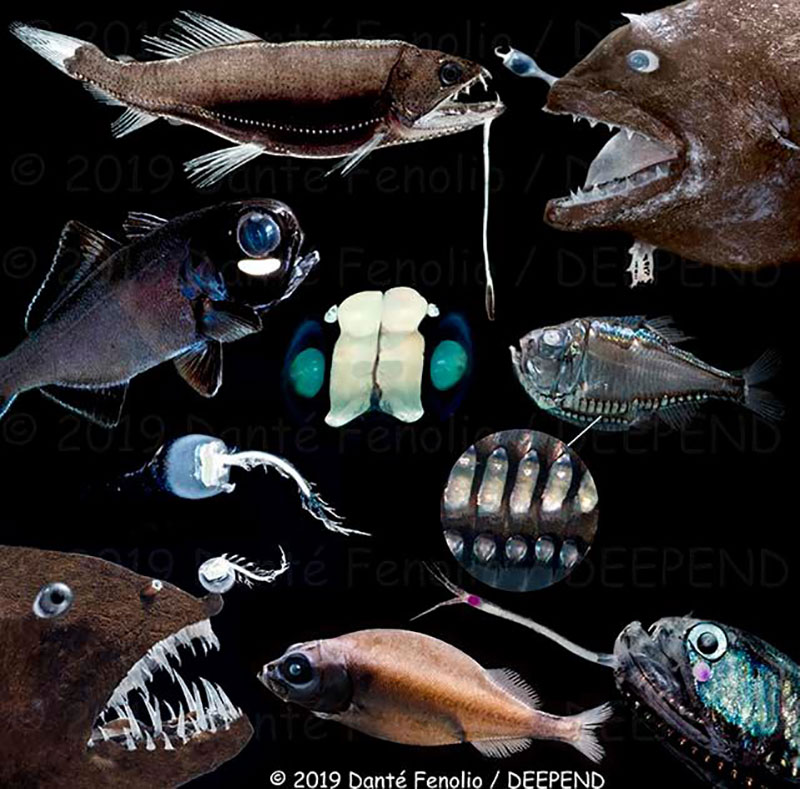

These are just a few examples of the remarkable diversity of light-emitting structures fish have evolved to help them survive in the dark. The dragonfish, top left, sports a lure that dangles from its chin and an array of light organs called photophores along its flanks. The bearded netdevil anglerfish, top right, has actually evolved two different kinds of bioluminescence – symbiotic bacteria in a light organ called an esca that protrudes above its nose and a highly branched beard that hangs from its chin and emits intrinsic (i.e., internally produced) bioluminescence. Proceeding clockwise, the hatchetfish has optically elaborate photophores (shown in inset) that direct light downward to mask its silhouette. Below it, a different kind of dragonfish has a lure that protrudes from its chin directly in front of its mouth. It also has a built in flashlight under each eye and photophores along its belly. At bottom center, the shining tubeshoulder fish is so named because it actually has a tube on it “shoulder” that can squirt out liquid light. The lures of some anglerfish like that bottom left and shown in detail in inset seem like they have evolved to resemble something else – but what? Above it, a flashlight fish displays the brilliant light organ for which it’s named. Because its luminescence originates from symbiotic bacteria that glow all the time, it has evolved a shutter that is essentially like an upside down eyelid, which it can use to shut off the light. Staring out at you from the center of the image are the amazing headlights found between the eyes of the common lanternfish, Diaphus. Most of what we think we know about how these fish use their phenomenal light producing equipment is based on speculation rather than direct observation.